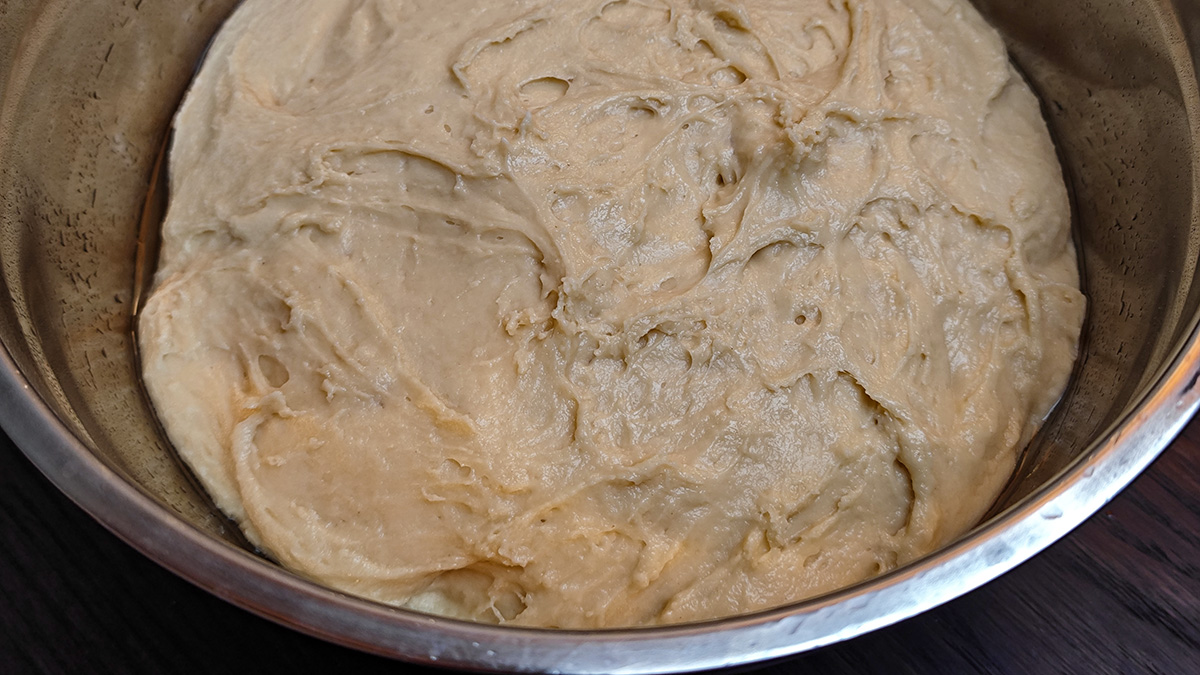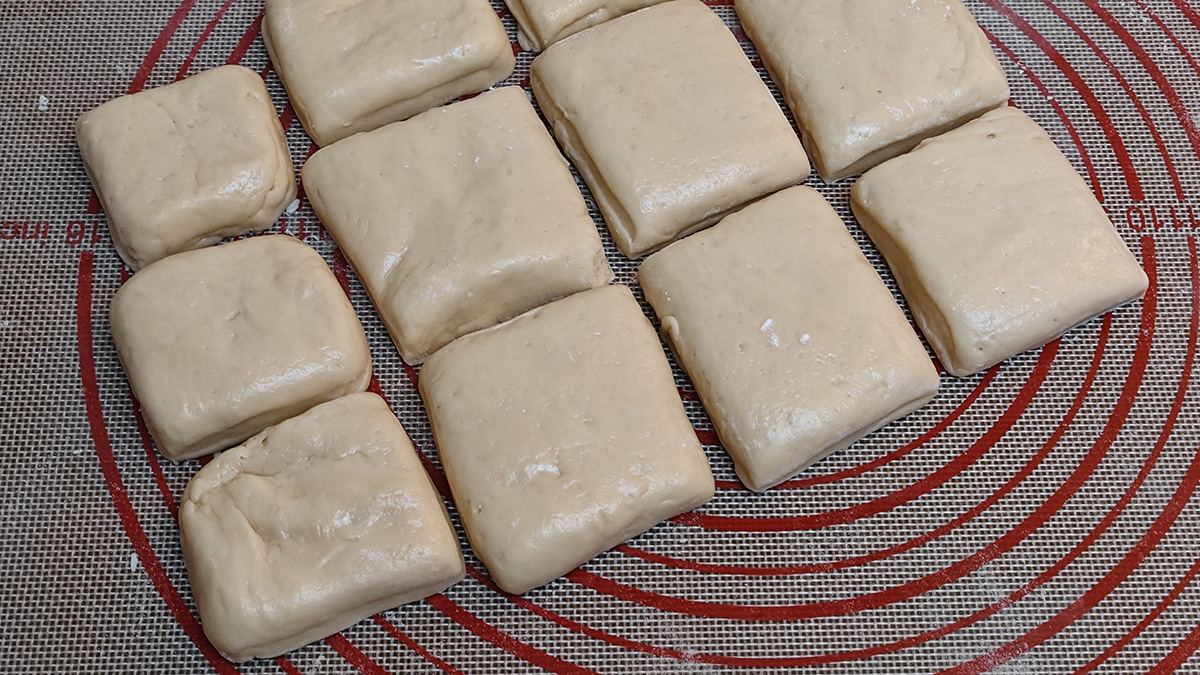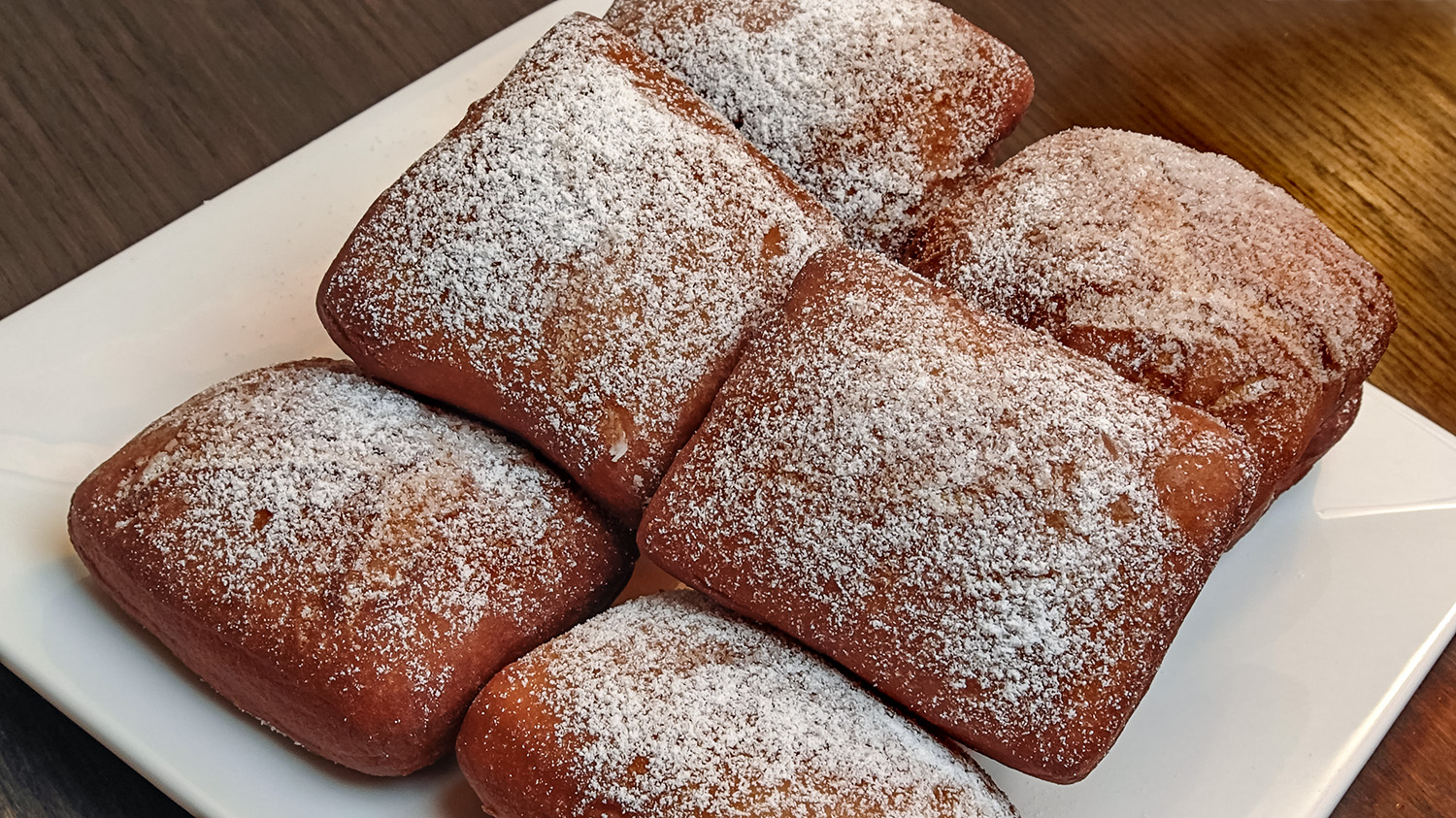Clem's Beignets
Beignets (beh-nyes) are a Louisiana pastry item arising
from its French origins. They are similar to doughnuts in that
both are deep-fried pastries. While doughnuts are ring-shaped
with a hole in the middle, beignets are square or rectangular
(often called "golden pillows").
Doughnuts are often stuffed with a filling whereas beignets are
simply dusted with powdered (icing) sugar.
They are not difficult to make. Here's how:
1. Ingredients
- 3/4 cup warm water.
This is for blooming the yeast and so has to be at a temperature suitable for yeast multiplication.
- 100 g fine sugar (add 150 g if you
like a sweeter beignet).
- 7 g active dry yeast (1 sachet).
- 1 large egg (room temperature).
- 120 mL warm milk.
- 2 teaspoons vanilla extract.
- 450 g plan flour (also called "All
Purpose Flour).
- 1 teaspoon salt.
- 42 g unsalted butter.
- Cooking oil of choice enough to
float the beignet when deep-frying.
- Powdered (icing) sugar to dust the
beignets after frying.
2. Method
- Place the 3/4 cup warm water in a
mixing bowl.
Add half the quantity of sugar.
Add the dried yeast.
Mix and then set aside for 15 minutes at room temperature (use a warm oven if it is winter at your place) for the yeast to bloom.
- Add a teaspoon of salt to 450 g of
plain flour and mix.
- After 15 minutes, add milk,
vanilla extract, the remaining sugar, and an egg to yeast
preparation.
Whisk well.
Add half the flour and mix.
The result should be a runny flour mix.
- Move the flour mixture to a stand
mixer with a dough hook attached.
At medium speed, slowly add the remaining flour and mix until the dough is smooth.
After some 5 minutes of mixing, the dough should be tacky and elastic.
- Transfer the dough to a well-oiled
bowl.
Cover with plastic wrap and set aside for at least 2 hours for the yeast to proof the dough (cause it to rise).
Or leave the covered dough overnight in a refrigerator.
This step is essential to make for fluffy (through gas pockets) beignets.
When the dough has risen (look for twice the starting volume), it is ready to be cut and shaped.

Clem's Beignet dough after overnight proofing in a refrigerator
- Dust a working surface well with
flour.
- Transfer the risen dough to this
surface and work it to a flat and rectangular shape.
Aim for a thickness of about 1 cm.
Work the dough gently so as not to disrupt the gas entrapped in it.
- Cut the rectangular dough into
smaller squares or rectangles.

Beignet dough cut
and shaped
- Add cooking oil to a pan.
The quantity should be such that the beignets to be fried will float in the oil.
- Heat the oil to 180oC.
- Drop the dough into the oil and
fry until golden brown.
Turn the dough over several times in the oil to allow even cooking.
- When each piece is done, remove
from the oil and set onto a paper towel to absorb free oil.
- Dust each fried piece with
powdered sugar (your choice of quantity).
Note that powdering should be done while the beignets are just out of the frying pan otherwise the sugar may not stick well.
- Serve with coffee while the
beignets are still hot!
*A note on deep-frying beignets:
The right combination of thickness of each dough piece dropped
into the frying oil, the temperature of the oil, the quantity of
inclusions in the dough which will brown (e.g. sugar and
milk), and frying time will determine the degree of fried brown
colour in the final outcome versus how well the dough is cooked
inside. If things are not well balanced, a brown beignet may
result but one with an under-cooked interior. What you are
looking for is a golden brown with a well-cooked fluffy
interior. If under-cooking results, try baking the recalcitrant
ones at 190oC in an oven.

Clem's beignets
ENJOY!
All my cooking (some without recipes) can be found here (click on each photo to go to that dish's page):
http://clemkuek.com/photoalbum/photo696.html
Video presentations can be found here:
Earlier days: https://youtu.be/BWyHY1h9Y5s
More recently: https://youtu.be/cph2XmwuQLU
30 July
2025
Created by Clem Kuek
